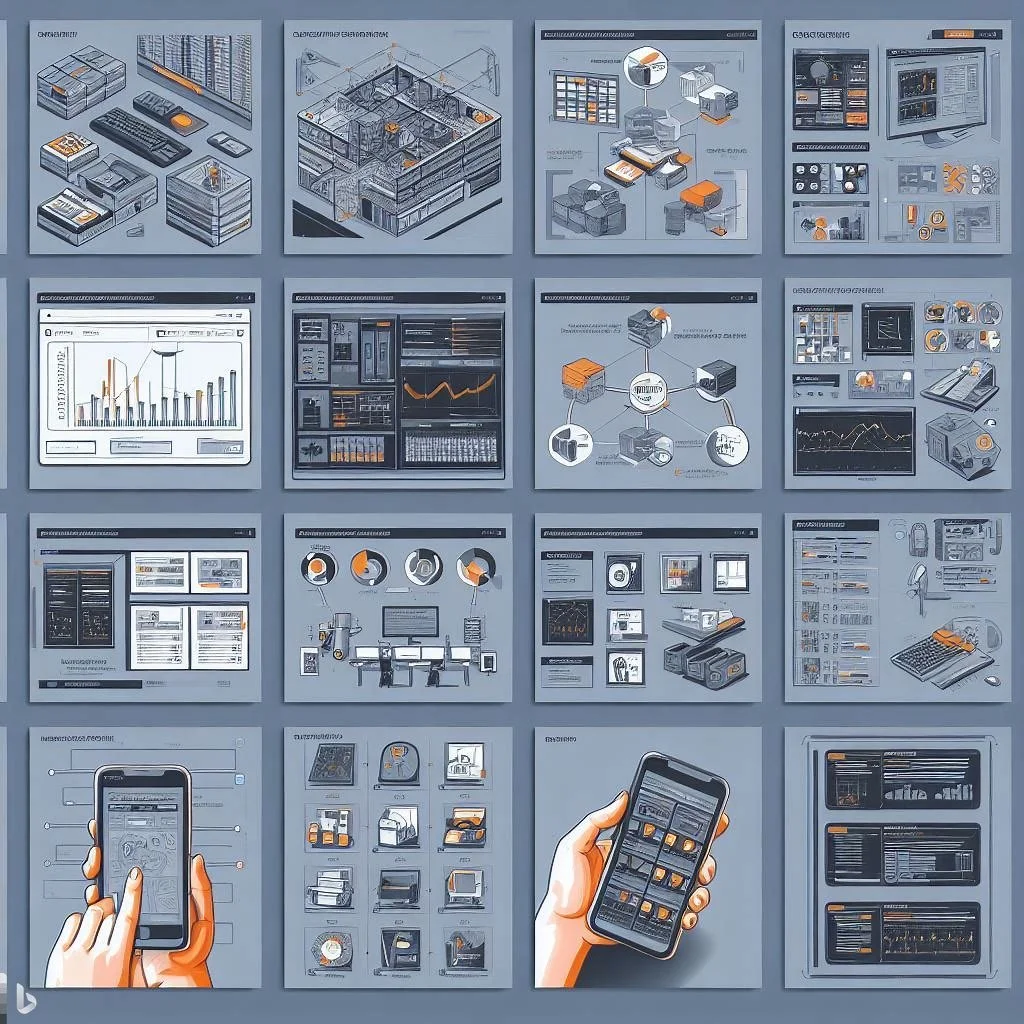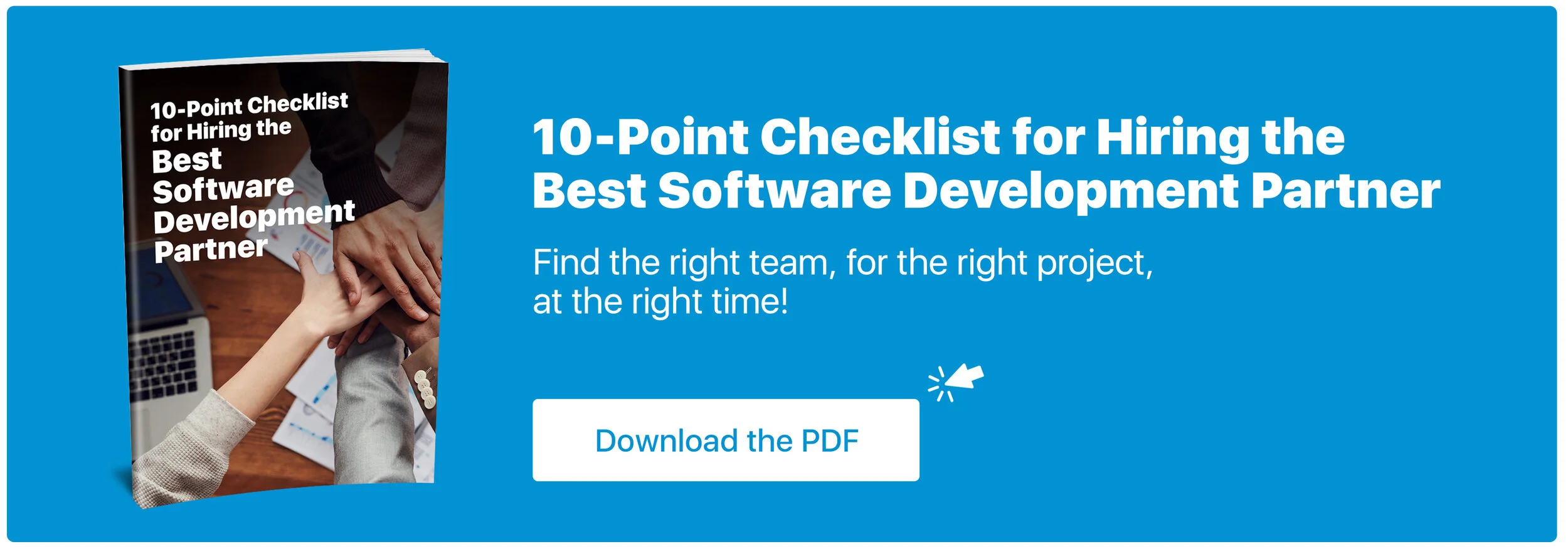The invention of biometrics has created large changes for the digital world, with technological advancements in AI-based face recognition applications. Years ago, this type of technology or even the concept of mobile face recognition seemed to be too far-fetched of an idea. But, here we are in 2020 with facial recognition apps that diagnose patients, control false arrests, and decrease the amount of cybercrimes. Along with this, the technology has helped with successful innovative apps like Face app.
If you’re a business looking into creating face recognition apps, you need to know who your competitors are. This blog will go into detail of the market and insights - your complete guide to facial recognition.
Trends in AI
Artificial intelligence advancements have been BIG, to say the least…
In terms of biometrics, it started off with being able to unlock your smartphone, now criminals are able to be identified with ease and efficiency. Biometric data is unique to each person and as such, used to identify you and I and whoever else is using it. In comparison to fingerprint and iris recognitions, facial recognition has an advantage with non-contact, high concurrency, and user-friendly abilities.
Education, security, and assorted businesses are adapting more and more biometrics technology into their industries.
Popular social media platforms like Instagram, Snapchat, and Prisma have advanced such technology immensely. With celebrities like Justin Bieber, Kylie Jenner and more promoting AI tech with Face app, the application gained a lot of popularity throughout the world.
But, what are the different facial recognition apps available and which is better than the other?
Top 10 Face Recognition Applications
1.Luxand (Android & iOS)
Luxand is not merely one application, it’s an entire company which offers multiple services and apps; consisting of biometrics identification and face SDK for surveillance. Some of their famous customers include: Samsung, Ford, and Universal Pictures, along with the United States Department of Defense Cyber Crime Center.
Key Features:
Software that detects 70 facial features
App memorizes faces for future reference
Face SDK for privacy concerns for multiple facial detection APIs
Ability to recognize faces in live streams to authenticate the individual
APIs:
Facial recognition: Tap a detected face and put a name to it. The face app memorizes the person and will recognize it in the future.
Avatar: Ability to alter user face into 3D animated avatar.
E-Cards: Create 3D e-Cards and animated faces.
Baby Prediction: Are you expecting? Predict your baby’s facial features by creating a photo of your future child.
Face Aging: Are you curious about how you’ll look 20 years from now? 30? 40? Age your face through this facial recognition software.
Zombie: Do you want to see yourself as a zombie? Use this app!
Face Enhancement: Improve your skin tone and enhance yourself by removing anything you don’t like.
Pros:
Great face APKs
Ability to detect any facial features from stored memory
Users can experiment with various avatars and facial characteristics
2. FaceApp (Android & iOS)
This is a facial detection application that’s famous for its celebrity face recognitions. Make yourself look older, prettier, or look like Jlo!
Key Features:
Engaging users with Hollywood filter selfie
Recognizes celebrities with facial identification, allowing users to share photos (like other media apps)
AI-based styling features
Ability to replace background and apply colour filters
Filters include: smile, hairstyle, gender-swap, age, and skin tone lightning
Pros:
Advanced features and filters for enhanced user experience
Professional quality photos and user-friendly app
Cons:
Photos cannot be saved in HD
Not many varying shades for filters
Expensive
3. AppLock (Android)
Amongst one of the greatest face recognition applications, the software ensures complete security by only allowing the user to access their personal information. Not only does it have the ability for mobile face recognition, but also voice recognition!
Key Features:
Combination of voice and facial recognitions
Ability to create back-up authentication
Works without the Internet
Pros:
Advanced biometric authentication technology
Facial recognition is interactive
Enrollment is user-friendly
Cons:
Face recognition app has certain privacy issues
4. Face DNA Test (Android)
One of ancestry and most advanced face apps on the market, it takes one’s facial profile and calculates unique facial features. Afterwards, it compares you (or whoever you used) to another person to see potential relations.
Key Features:
Compare facial features with siblings or other family members
Verification between potential family members using app algorithms
Use of 68 different facial points with comparisons in between people’s anatomies
Baby photos can be used
Pros:
DNA testing
User-friendly
Face matching algorithms
Cons:
Not many advanced features
User interface is not engaging
5. Railer (Android & iOS)
A range of institutions use facial recognition technology for attendance purposes (e.g. colleges). The greatest benefit being accurate attendance - no false positives, essentially.
Key Features:
Quick and easy access for employees to log-in and out
Self-check-in
HR is able to have reliable time attendance
App provides analytics
App sends push notifications
Pros:
Employee management is efficient
App provides reports for keeping track of employees
6. Blippar (Android & iOS)
This app helps users learn from their environment by scanning anything to understand more about it. It is mainly used for object recognition, allowing users to use augmented reality technology. For example, if a dog is scanned, the app supplies integral information such as the breed of the animal.
Key Features:
Scan anything and everything
Recognize human faces, animals, plants, etc.
Pros:
Scanning is simple
Products with Blippar’s logo on it are scannable
Augmented reality experiences
Cons:
User interface is not the best
Many bugs that need fixing
7. Face2Gene (Android & iOS)
This app is made specifically for healthcare workers, thus not for public use. It assesses patient evaluations with phenotyping and increasing the confidence of healthcare professionals by prioritizing genetic disorders.
Key Features:
Discoverability of genetic disorders
Detects dysmorphic features
Community group for healthcare workers
Users get feedback
Doctors are able to securely share cases
Pros:
Variety of syndromes
Accurate analysis about patient health
Arguably more accurate (in some cases) than doctor diagnosis
Cons:
User interface could use some work
Email alerts that become a nuisance
Only healthcare professionals are able to use the app
8. Face First (Android & iOS)
This app allows users to identify others from a distance. It’s perfect for the military, retailers, and law enforcement. The app has real-time alerts, emails, accurate details, and text alerts. All the data uploaded on to the app is protected from third-parties. You must have valid credentials to use this application.
Key Features:
Security alerts given with correct information and time stamps
Mobile watchlist
Photos can be taken from distances with identity confirmation
Pros:
Fast notifications and updates
Encrypted data capabilities to avoid misuse and false profiling
Can work as a stand-alone solution or part of a company’s biometric framework
Cons:
User interface needs work
Both platforms (Android & iOS) have different features and functions
9. MojiPop (Android & iOS)
This is a free facial recognition software that has lots of fun animated stickers that portray different moods of each user through the use of an interactive keyboard.
Key Features:
Create your own personal avatar by taking a selfie
Available in 58 languages
Users can alter their hairstyles, moods, backgrounds, and expressions
Pros:
Quick and easy access with stickers that look like you
Ability to convert stickers to other usable formats
Many free caricatures and stickers made every single day!
Cons:
Online customer service is not the best
Users aren’t able to delete previously made avatars
Features need some work
10. BioID (Android & iOS)
This app uses biometrics to verify other’s identities and allows users to log into varying supported sites with face ID. The app can identify hackers with the company’s Fake Defender feature, along with the ability to protect photo attacks.
Key Features:
Live detection
Movement analysis to ensure one’s presence on application
Periocular eye recognition
Photos click in four different directions for varying lighting
Pros:
Can be used as authenticator to log into supportive apps or websites
Secure and convenient face app
User-friendly
Cons:
Only primary option when unlocking is face ID
Features and functions need some work in terms of engagement
Types of Biometrics
There are two main types of biometrics, which fall into two categories:
Physical Identifiers
Fingerprints: Popular with smartphones, also can be used with doors, computers, etc. to be an easy and efficient way to ‘log in’ somewhere.
Photo/Video: With a mobile camera, this feature can be used for authentication, common functions being: retinal and facial recognitions.
Voice: Voice recognition is a growing authentication system which uses digital assistants and varying services to identify people.
DNA: This is the only form of biometrics which can find familial relations. It is especially accurate when looking for missing people, human trafficking, and victim identification.
Signature Recognition: This software is often used in banks and retail locations as it is convenient in situations whereby users need to sign their names.
Physiological Recognition: Apart from facial recognition, there are various image-based recognitions such as retina or iris detections, palm and ear recognition, and hand geometry.
Behavioural Identifiers
Typing Patterns: You’re able to identify someone based on their typing speed and degree of impact on the keyboard, essentially identify one by their typing style.
Navigation Standards: This is detected with mouse movements, software and finger movements on the touch screen.
Physical Movement: One of the main authentication physical recognizers is walking - it’s used for businesses when management wants to identify their employees.
Patterns Engagement: Everyone is unique when it comes to how one opens an app, their location and times of day, the way we browse, how we check our social media and hold our phones. These are all behavioural characteristics that distinguish humans from robots.
Who are these facial recognition apps useful for?
Airports: These apps are great for security purposes, and no one needs more security than airports!
Schools: Use these apps to ensure attendance and fraudulent activity.
Retail Outlets: With the combination of surveillance cameras and facial recognition tools to scan faces, this is a great way to detect shoplifters.
Boarding Pass: An alternative to this could be validating one’s identity before boarding flights.
Marketing Campaigns: Marketing is all about targeting a certain audience based on gender, ethnicity, age and so on. Through the use of facial applications, businesses looking to market to specific groups can ensure their campaign is successful.
Social Media: Social platforms have large risks in terms of identity or data fraudulent activities. In order to ensure this doesn’t happen to you, algorithms like Facebook face recognition validates one’s identity with photo uploads.
Medical Services: These apps are great for the healthcare sector for identifying and keeping track of patients, along with records of information which are detrimental to one’s health.
Loads of Information, but Don’t Know Where to Start?
Your up and coming app can be the next big thing with all these great AI and facial recognition functionalities! However, it’s quite difficult to do this all on your own, especially without software knowledge.
ISU Corp is an experienced custom software company that is here to help! We’re well-versed on this topic and are more than happy to offer our expertise. Contact us today to learn more!


























